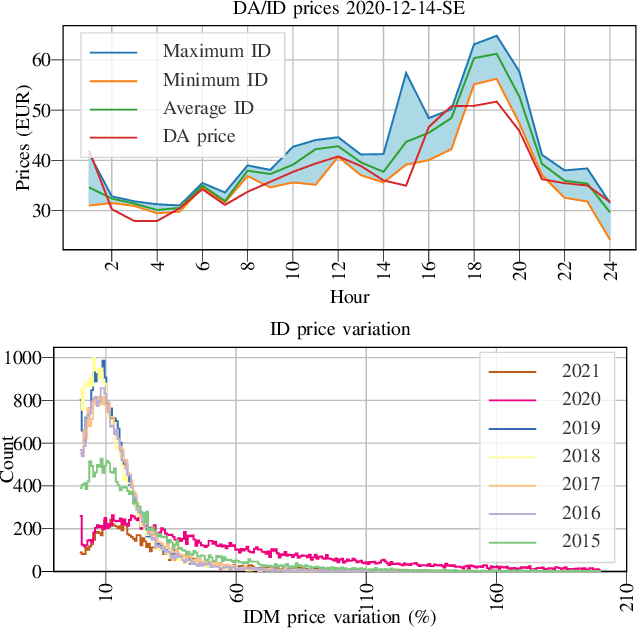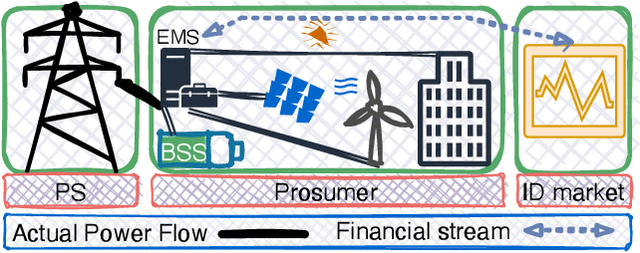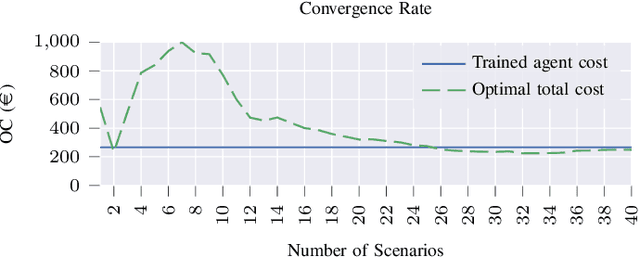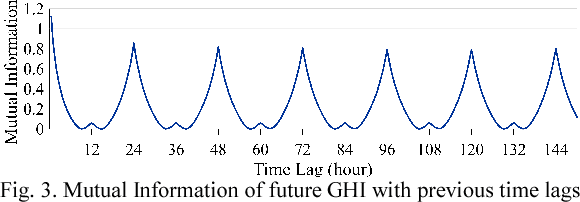Saeed Mohammadi
Econometric Modeling of Intraday Electricity Market Price with Inadequate Historical Data
Mar 11, 2022



Abstract:The intraday (ID) electricity market has received an increasing attention in the recent EU electricity-market discussions. This is partly because the uncertainty in the underlying power system is growing and the ID market provides an adjustment platform to deal with such uncertainties. Hence, market participants need a proper ID market price model to optimally adjust their positions by trading in the market. Inadequate historical data for ID market price makes it more challenging to model. This paper proposes long short-term memory, deep convolutional generative adversarial networks, and No-U-Turn sampler algorithms to model ID market prices. Our proposed econometric ID market price models are applied to the Nordic ID price data and their promising performance are illustrated.
A Machine Learning Approach for Prosumer Management in Intraday Electricity Markets
Mar 11, 2022



Abstract:Prosumer operators are dealing with extensive challenges to participate in short-term electricity markets while taking uncertainties into account. Challenges such as variation in demand, solar energy, wind power, and electricity prices as well as faster response time in intraday electricity markets. Machine learning approaches could resolve these challenges due to their ability to continuous learning of complex relations and providing a real-time response. Such approaches are applicable with presence of the high performance computing and big data. To tackle these challenges, a Markov decision process is proposed and solved with a reinforcement learning algorithm with proper observations and actions employing tabular Q-learning. Trained agent converges to a policy which is similar to the global optimal solution. It increases the prosumer's profit by 13.39% compared to the well-known stochastic optimization approach.
Convolutional Graph Auto-encoder: A Deep Generative Neural Architecture for Probabilistic Spatio-temporal Solar Irradiance Forecasting
Sep 10, 2018



Abstract:Machine Learning on graph-structured data is an important and omnipresent task for a vast variety of applications including anomaly detection and dynamic network analysis. In this paper, a deep generative model is introduced to capture continuous probability densities corresponding to the nodes of an arbitrary graph. In contrast to all learning formulations in the area of discriminative pattern recognition, we propose a scalable generative optimization/algorithm theoretically proved to capture distributions at the nodes of a graph. Our model is able to generate samples from the probability densities learned at each node. This probabilistic data generation model, i.e. convolutional graph auto-encoder (CGAE), is devised based on the localized first-order approximation of spectral graph convolutions, deep learning, and the variational Bayesian inference. We apply our CGAE to a new problem, the spatio-temporal probabilistic solar irradiance prediction. Multiple solar radiation measurement sites in a wide area in northern states of the US are modeled as an undirected graph. Using our proposed model, the distribution of future irradiance given historical radiation observations is estimated for every site/node. Numerical results on the National Solar Radiation Database show state-of-the-art performance for probabilistic radiation prediction on geographically distributed irradiance data in terms of reliability, sharpness, and continuous ranked probability score.
 Add to Chrome
Add to Chrome Add to Firefox
Add to Firefox Add to Edge
Add to Edge